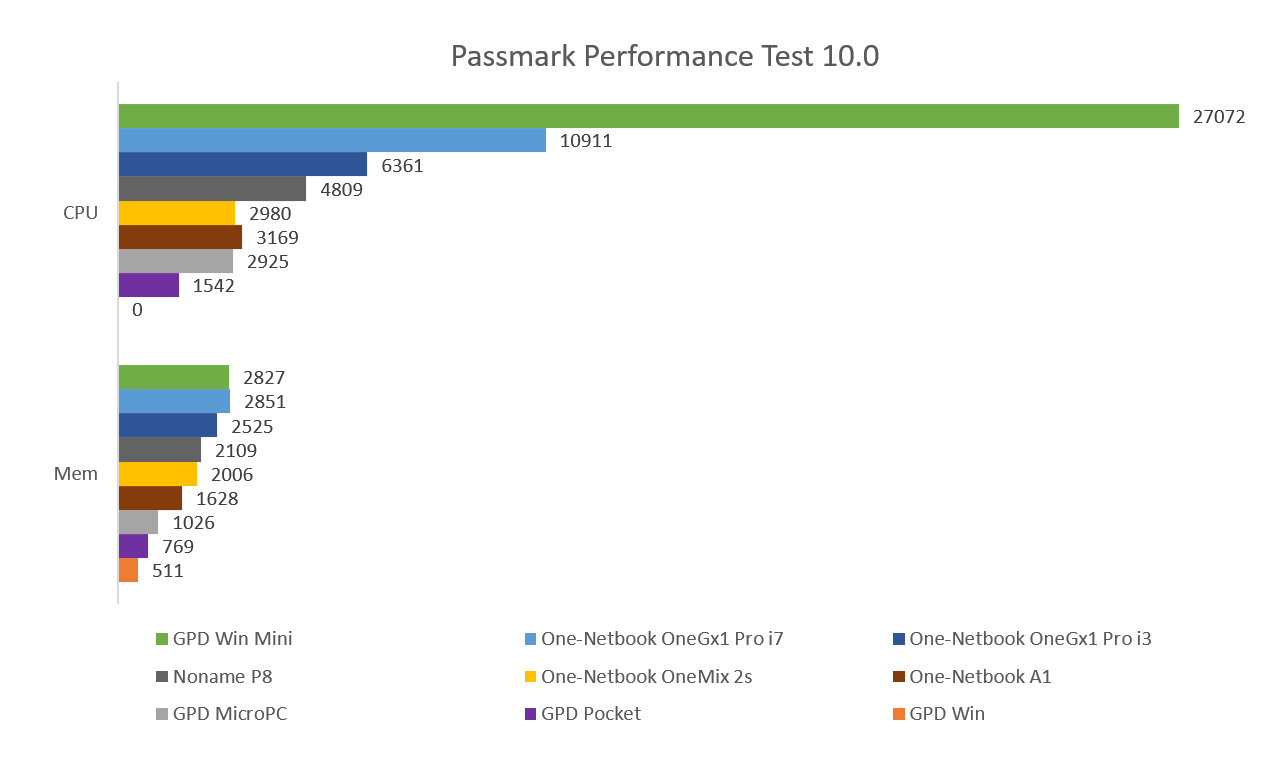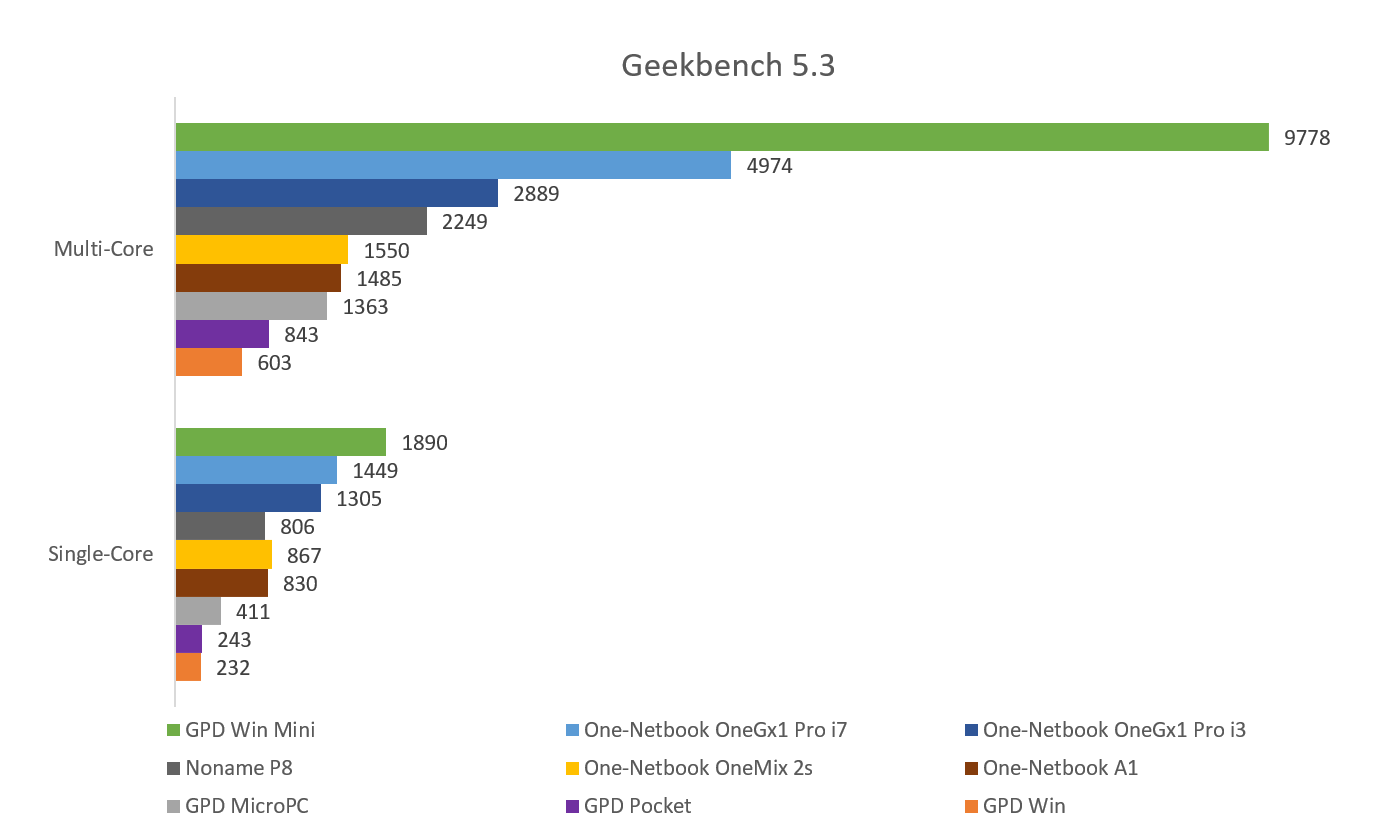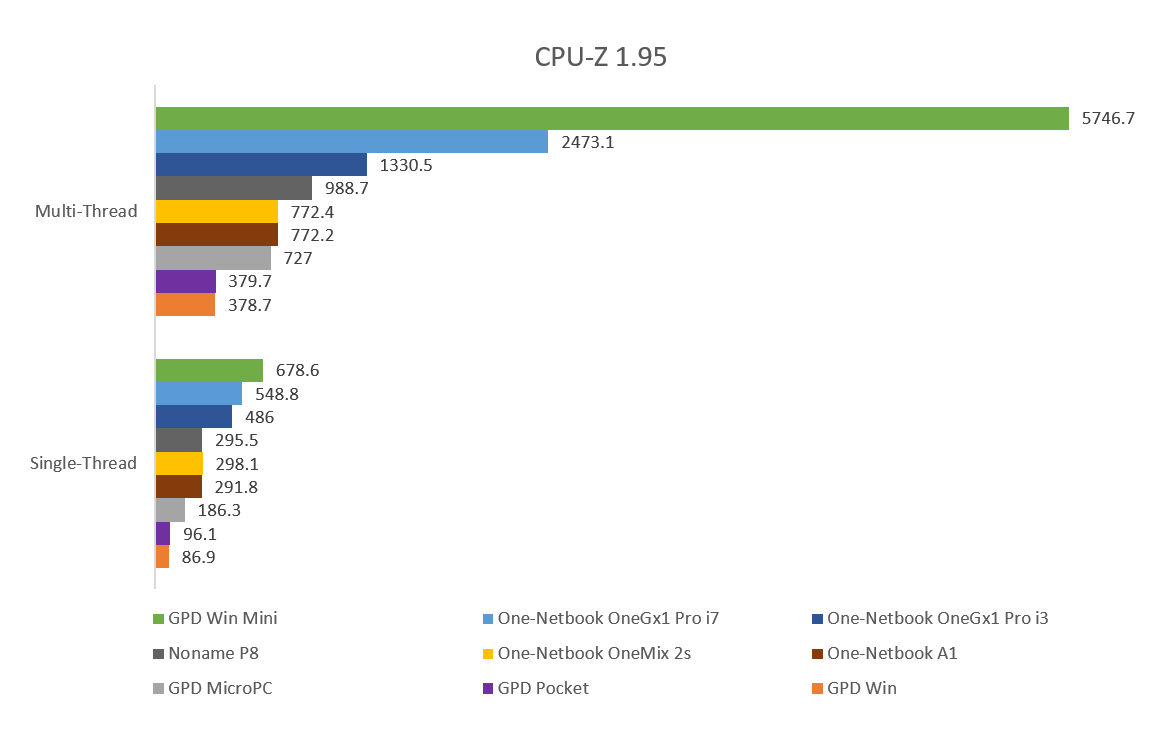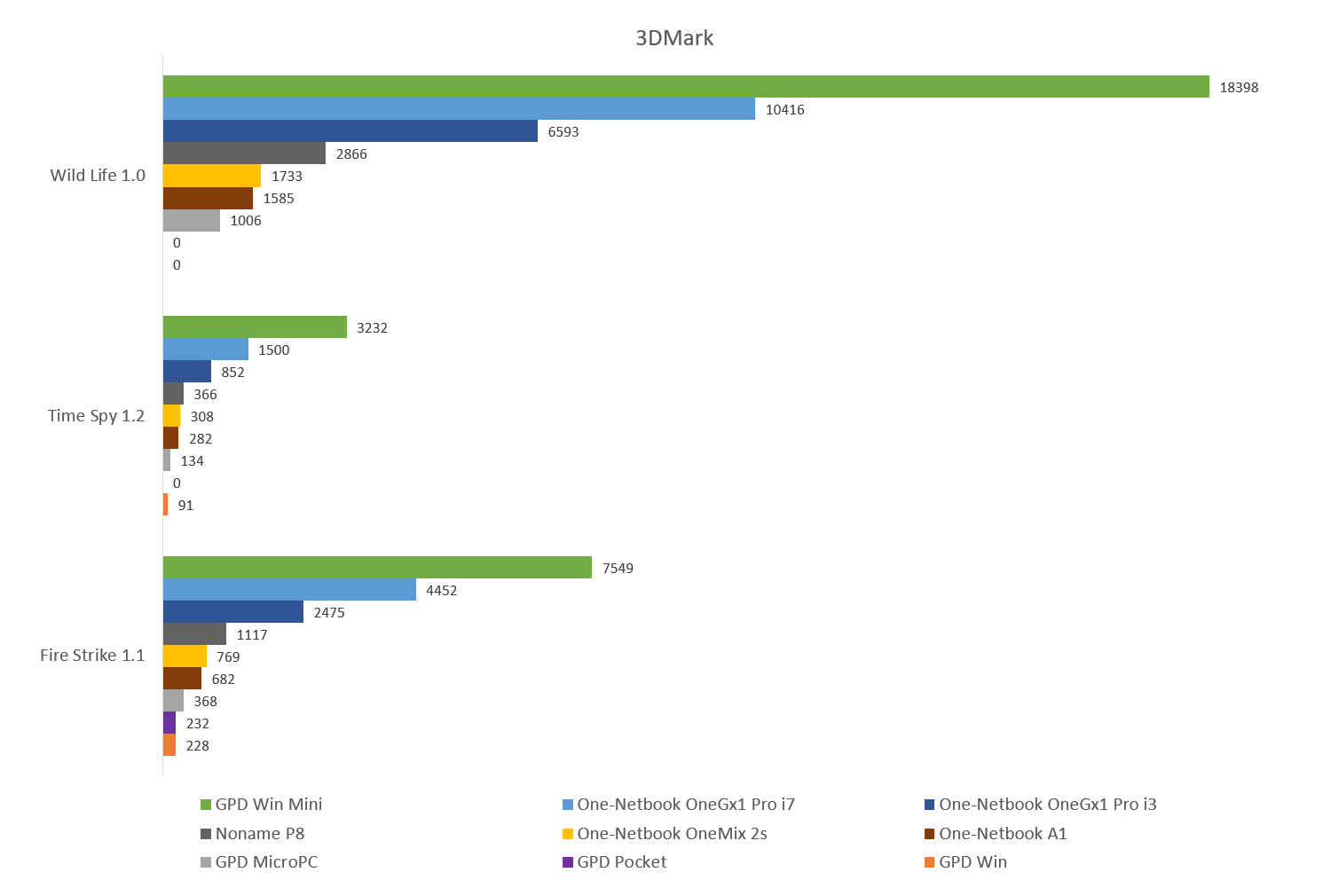For the past couple of years I’ve been using 7-inch handhelds from One-Netbook as my main workstation.
The devices do their job pretty well. And from an aesthetic point of view, I find these devices quite pleasing. The only thing that bothered me was a bit boring lid with no marks what so ever. Therefore I decided to put my custom logo using a laser engraving technique. The lady in the engraving is Themis (quite unusual, without a sword and with open eyes).
Tag: onemix 2s
Benchmarking UMPCs of the second epoch
Introduction
"An ultra-mobile PC (ultra-mobile personal computer or UMPC) is a miniature version of a pen computer, a class of laptop whose specifications were launched by Microsoft and Intel in spring 2006." (c) Wikipedia. That was the dawn of the first UMPC epoch. This epoch did not last too long, because in the early 2010s major UMPC manufacturers ended its product lines. Few years later new manufacturers emerged and recreated UMPC market. The major one was the Chinese company GPD. GPD started the second UMPC epoch by releasing gaming handheld GPD Win in 2016 and the general purpose device GPD Pocket in 2017. Since then a whole bunch of UMPC devices were released. In this article we will compare performance of various UMPC devices from the second epoch: including the very first GPD Win and the most powerful UMPC up do the date – One-Netbook OneGx1 Pro.
Disclaimer. This article is not a comprehensive performance analysis of the 2-nd era UMPCs. All the test items are taken from my collection. Therefore the number of test items is quite limited. In case I add any new corresponding items to my collection, this benchmark survey might be extended as well.
Testing methodology
The following programs were used to test CPU, Memory, Disk performance:
- Geekbench version 5.3.1;
- PassMark Performance Test 10.0 build 1010;
- CrystalDiskMark version 8.0.1;
- CPU-Z version 1.95;
The following programs were used to test 3D performance:
3DMark with default settings. Version details:
- Time Spy version 1.2
- Fire Strike version 1.1
- Wild Life version 1.0
- SystemInfo version 5.37.888.0
Unigine Heaven Benchmark at the resolution of 1280×720; version 4.0.
Test setup descriptions
GPD Pocket
Processor: Intel Atom x7-Z8750
BIOS version: AMI 5.11 8/7/2017
OS: Windows 10 Professional Version 10.0.18363 Build 18363
Intel HD Graphics 405 driver version: 20.19.15.4444
GPD Win
Processor: Intel Atom x7-Z8750
BIOS version: AMI 5.11, 25.05.2017
OS: Windows 10 Professional Version 10.0.18363 Build 18363
Intel HD Graphics 405 driver version: 20.19.15.4549
GPD MicroPC
CPU: Intel Celeron N4100
BIOS version: AMI 02.07.2019
OS: Windows 10 Professional Version 10.0.17763 Build 17763
Intel UHD Graphics 600 driver version: 26.20.100.7584
TDP: 10W
One-Netbook A1
Processor: Intel Core m3-8100Y
BIOS version: AMI 5.12 12.09.2020
OS: Windows 10 Professional Version 10.0.19042 Build 19042
Intel UHD Graphics 615 driver version: 27.20.100.8681
One-Netbook OneMix 2s
Processor: Intel Core m3-8100Y
BIOS version: AMI 5.12 04.03.2019
OS: Windows 10 Professional Version 10.0.19042 Build 19042
Intel UHD Graphics 600 driver version: 26.20.100.7584
Noname P8
Processor: Intel N100
BIOS version: 5.25 MH-ADL81 1.08 x64
OS: Windows 10 Pro Version 22H2 Build 19045.5131
Intel UHD Graphics driver version: 32.0.101.6129
One-Netbook OneGx1 Pro i7
Processor: Intel Core i7-1160G7
BIOS version: AMI 5.19 17.12.2020
OS: Windows 10 Professional Version 10.0.19042 Build 19042
Intel Iris Xe Graphics driver version: 27.20.100.8680
One-Netbook OneGx1 Pro i3
Processor: Intel Core i3-1110G4
BIOS version: AMI 5.19 2.21.1278
OS: Windows 10 Professional Version 22H2 Build 19045.4529
Intel UHD Graphics driver version: 32.0.101.6325
GPD Win Mini 2024
Processor: AMD Ryzen™ 7 8840U @28W
RAM: 32Gb 7500Mhz
BIOS version: MiniEDP 1.66 x64
OS: Windows 11 Home 23H2 Build 22631.4602
AMD GPU driver version: 24.12.1
CPU & Memory performance



Processor performance in multithreaded mode has at least doubled from 2021 to 2024. At the same time, the performance of a single core is barely noticeable and is growing at a much less significant rate.
SSD performance

The read and write speeds of solid-state drives have also almost doubled and reached incredible values of about 3 GB/sec.
3D performance


Few notes:
- Performance of Iris Xe (One-Netbook OneGx1 Pro i7) was just outstanding as of 2021.
- The performance of the Radeon 780M (GPD Win Mini) has almost doubled compared to the Iris Xe.
- Tiger Lake supports Thunderbolt 4, which allows to connect eGPU to the UMPC. eGPU can improve 3D performance of OneGx1 Pro by at least 4 times. See details here: Benchmarking OneGx1 Pro with eGPU.
- Performance of A1 is significantly lower than performance of OneMix 2s, which is based on the same Intel Core m3-8100Y.
- Despite the similar brand name "UHD Graphics", the GPU performance in the i3-1110G4 is 2+ times higher than the performance of the m3-8100Y and N100.
Conclusion
Since the GPD Win (released in 2017) performance of UMPCs for 2024 has changed as follows:
- CPU performance in single-threaded mode has increased by about 8 times and has not grown significantly in the last 3 years.
- CPU performance in multithreaded mode has increased by about 15 times and has roughly doubled over the past 3 years.
- SSD read performance increased by 20 times, and write performance increased by 37 times.
- GPU performance increased by about 20-35 times, depending on the task.










